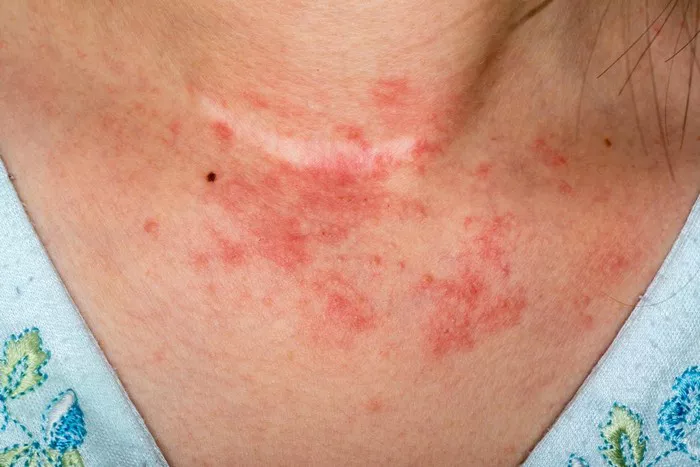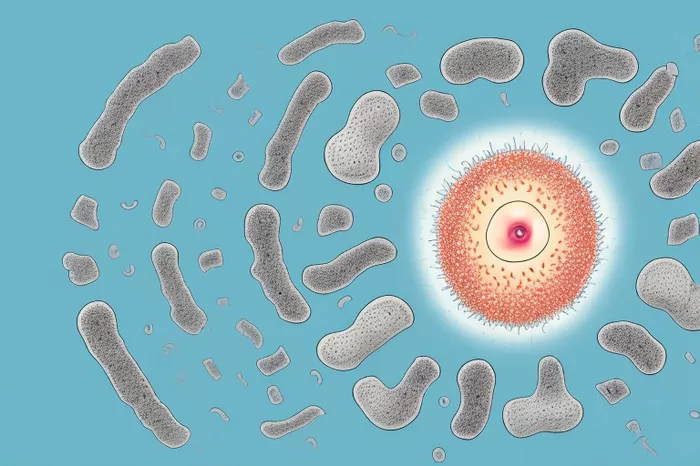Nummular eczema, also known as nummular dermatitis, is a chronic skin condition that presents as round, coin-shaped patches of irritated skin. These patches can be itchy, scaly, and sometimes weep fluid. Understanding nummular eczema involves exploring its symptoms, causes, risk factors, diagnosis, and treatment options.
Symptoms of Nummular Eczema
The symptoms of nummular eczema can vary from person to person. Common symptoms include:
Coin-shaped lesions: The hallmark of nummular eczema is the presence of round, coin-like patches. These can vary in size and may appear anywhere on the body, though they are most commonly found on the legs, arms, and torso.
Itching: The affected areas are often very itchy. Scratching can worsen the irritation and lead to further complications.
Dryness and scaling: The patches are typically dry and may have a scaly appearance. The skin can crack, leading to discomfort.
Inflammation: The skin around the patches may become red and inflamed, indicating an active immune response.
Weeping or crusting: In some cases, the lesions may ooze fluid or develop a crust as they heal.
Causes of Nummular Eczema
The exact cause of nummular eczema is not fully understood. However, several factors contribute to its development:
Dry skin: Individuals with dry skin are more prone to developing nummular eczema. Low humidity levels, harsh soaps, and hot showers can exacerbate dryness.
Allergic reactions: Some people may experience nummular eczema as a reaction to allergens, such as certain fabrics, soaps, or other irritants.
Skin injuries: Cuts, scrapes, or insect bites can trigger nummular eczema. The skin’s protective barrier may be compromised, leading to inflammation.
Genetic predisposition: Family history plays a role in the likelihood of developing eczema. Those with a history of eczema, asthma, or hay fever are at higher risk.
Environmental factors: Seasonal changes, extreme temperatures, and exposure to irritants can also trigger nummular eczema flare-ups.
Risk Factors for Nummular Eczema
While anyone can develop nummular eczema, certain factors increase the likelihood:
Age: Nummular eczema can occur at any age but is more common in adults, particularly those over 55.
Gender: Males are generally more likely to develop nummular eczema than females.
Existing skin conditions: Individuals with other skin conditions, like atopic dermatitis or psoriasis, are at a higher risk.
Climate: People living in dry or cold climates may experience more frequent flare-ups due to the lack of moisture in the air.
Diagnosis of Nummular Eczema
Diagnosing nummular eczema typically involves:
Physical examination: A healthcare provider will examine the skin and look for the characteristic round patches.
Medical history: Discussing symptoms, triggers, and family history helps the provider understand the condition better.
Allergy testing: If an allergic reaction is suspected, the doctor may recommend allergy testing to identify potential triggers.
Skin biopsy: In rare cases, a skin biopsy may be performed to rule out other skin conditions.
Treatment Options for Nummular Eczema
While there is no cure for nummular eczema, several treatment options can help manage symptoms and reduce flare-ups.
1. Moisturizers
Keeping the skin hydrated is crucial. Use thick creams or ointments to lock in moisture. Apply moisturizer immediately after bathing to help trap moisture in the skin.
2. Topical corticosteroids
Over-the-counter or prescription-strength corticosteroid creams can help reduce inflammation and itching. Apply these as directed by a healthcare provider.
3. Calcineurin inhibitors
Medications like tacrolimus and pimecrolimus can reduce inflammation without the side effects of steroids. They are particularly useful for sensitive areas of the skin.
4. Antihistamines
Oral antihistamines can help alleviate itching, especially at night. This can improve sleep quality for those suffering from nighttime itching.
5. Wet dressings
Applying wet dressings to the affected areas can help soothe the skin and promote healing. This method is often used for severe cases.
6. Phototherapy
For chronic cases that do not respond to topical treatments, phototherapy (light therapy) may be recommended. This involves exposing the skin to controlled amounts of natural or artificial light.
7. Systemic medications
In severe cases, oral medications, such as corticosteroids or immunosuppressants, may be prescribed. These medications can help control severe inflammation but have potential side effects.
8. Lifestyle changes
Making certain lifestyle changes can help manage nummular eczema:
Avoid irritants: Identify and avoid soaps, detergents, or fabrics that irritate the skin.
Wear breathable fabrics: Cotton is often recommended as it allows the skin to breathe and reduces irritation.
Take lukewarm baths: Hot water can dry out the skin. Use lukewarm water and limit bath time.
Use gentle skin care products: Opt for fragrance-free and hypoallergenic products to minimize irritation.
Preventing Nummular Eczema Flare-ups
Preventing flare-ups is key for those with nummular eczema. Here are some strategies:
Moisturize regularly: Keeping the skin hydrated is vital. Use moisturizers daily, especially during dry seasons.
Avoid scratching: This can lead to further irritation and potential infections. Keep nails short and consider wearing gloves at night if necessary.
Identify triggers: Keeping a journal of flare-ups can help identify specific triggers, such as certain foods or environmental factors.
Maintain a stable environment: Use humidifiers in dry conditions and avoid extreme temperatures.
Follow treatment plans: Adhering to prescribed treatments can help manage symptoms effectively.
Complications of Nummular Eczema
While nummular eczema is not a life-threatening condition, it can lead to several complications:
Infections: Scratching the skin can break the barrier, increasing the risk of bacterial or fungal infections.
Scarring: Severe scratching can lead to skin damage and permanent scarring.
Psychological impact: The chronic nature of nummular eczema can lead to anxiety, depression, and reduced quality of life.
Conclusion
Nummular eczema is a common but manageable skin condition. By understanding its symptoms, causes, risk factors, and treatment options, individuals can take proactive steps to manage their skin health. Regular moisturization, avoidance of irritants, and adherence to treatment plans can significantly reduce flare-ups and improve overall quality of life. If symptoms persist or worsen, it is important to consult a healthcare provider for further evaluation and management.
























